Abstract
1. The specificity of several ganglion stimulants has been tested on the isolated guinea-pig ileum by measuring the dose ratios produced by concentrations of hexamethonium.
2. Most ganglion stimulants are also active at postganglionic receptors, some as blocking agents (for example, lobeline and dimethylphenylpiperazinium), others as agonists (for example, o-aminophenethyltrimethylammonium and, to a lesser extent, nicotine). The most specific ganglion stimulant, with the least activity at postganglionic receptors, was p-aminophenethyltrimethylammonium.
3. The affinity constants of lobeline and dimethylphenylpiperazinium for the muscarine sensitive receptors in the guinea-pig ileum are 1·05 × 106 and 3·71 × 104, respectively.
4. The antagonism of p-aminophenethyltrimethylammonium by hexamethonium gave results consistent with competition up to dose ratios of about 20. Such results could also be obtained if the antagonism were non-competitive, however, provided large responses could be obtained with less than about 5% of the receptors in the ganglia activated. The affinity constant of hexamethonium is about 2·6 × 105.
5. It is suggested that the affinity of hexamethonium can largely be ascribed to hydrophobic bonding.
Full text
PDF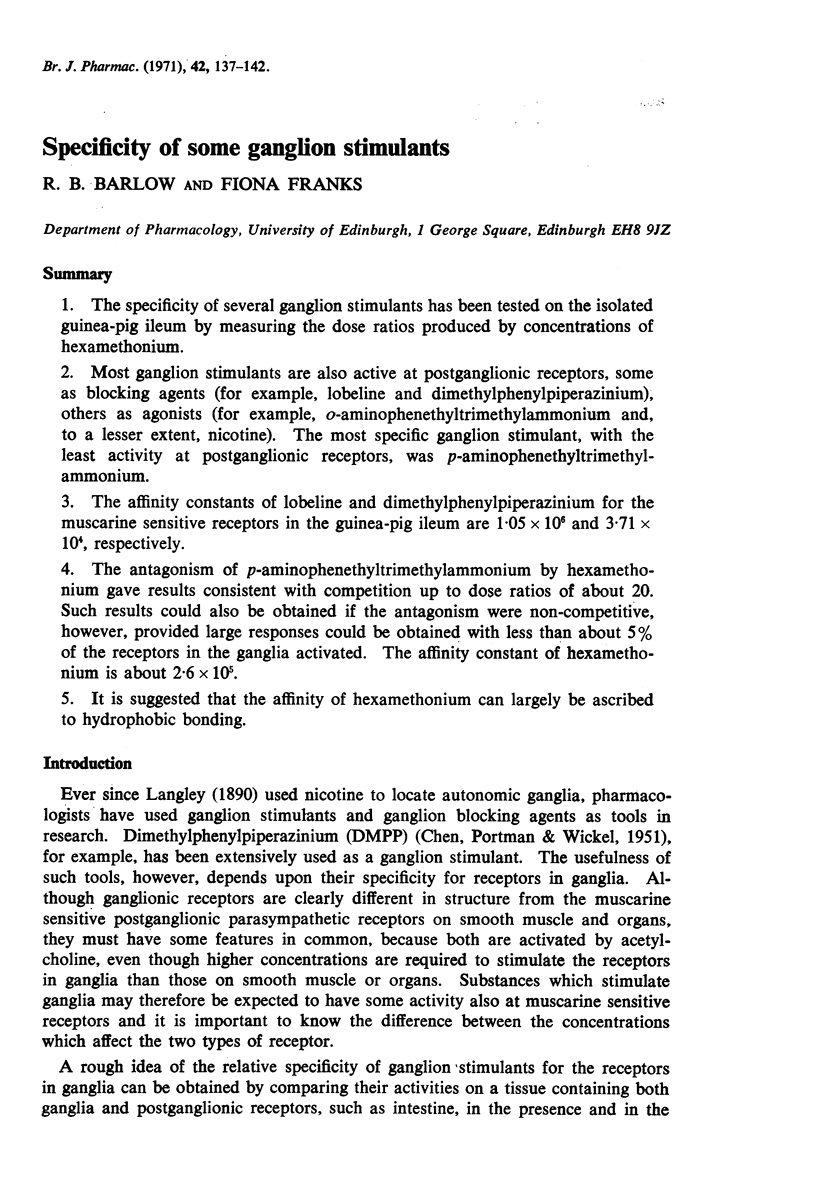
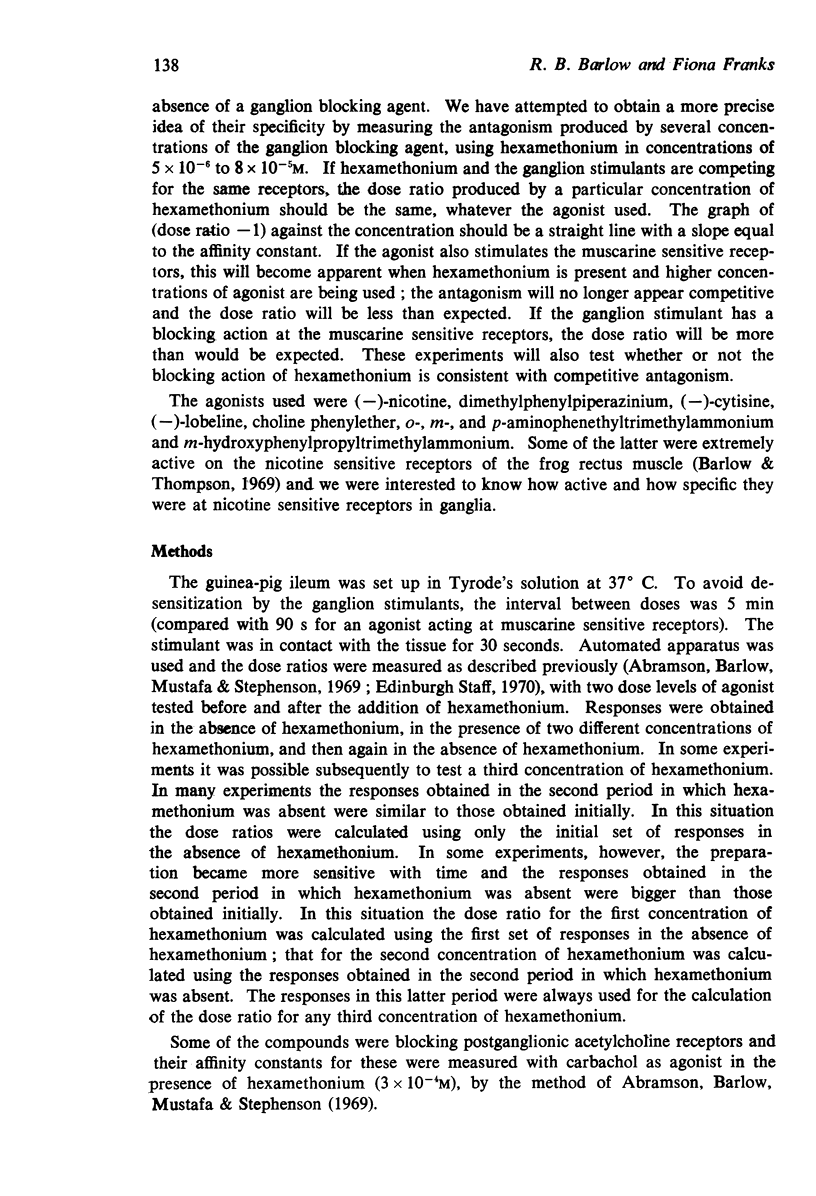
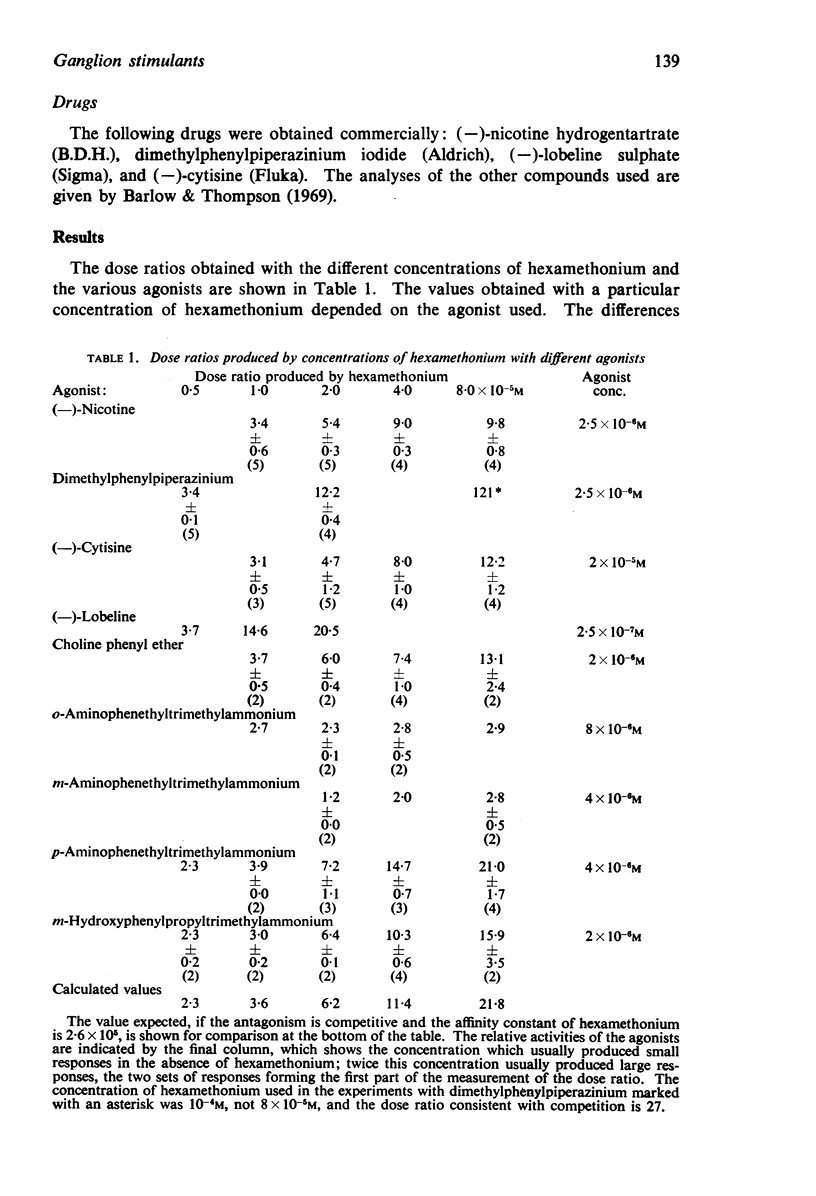
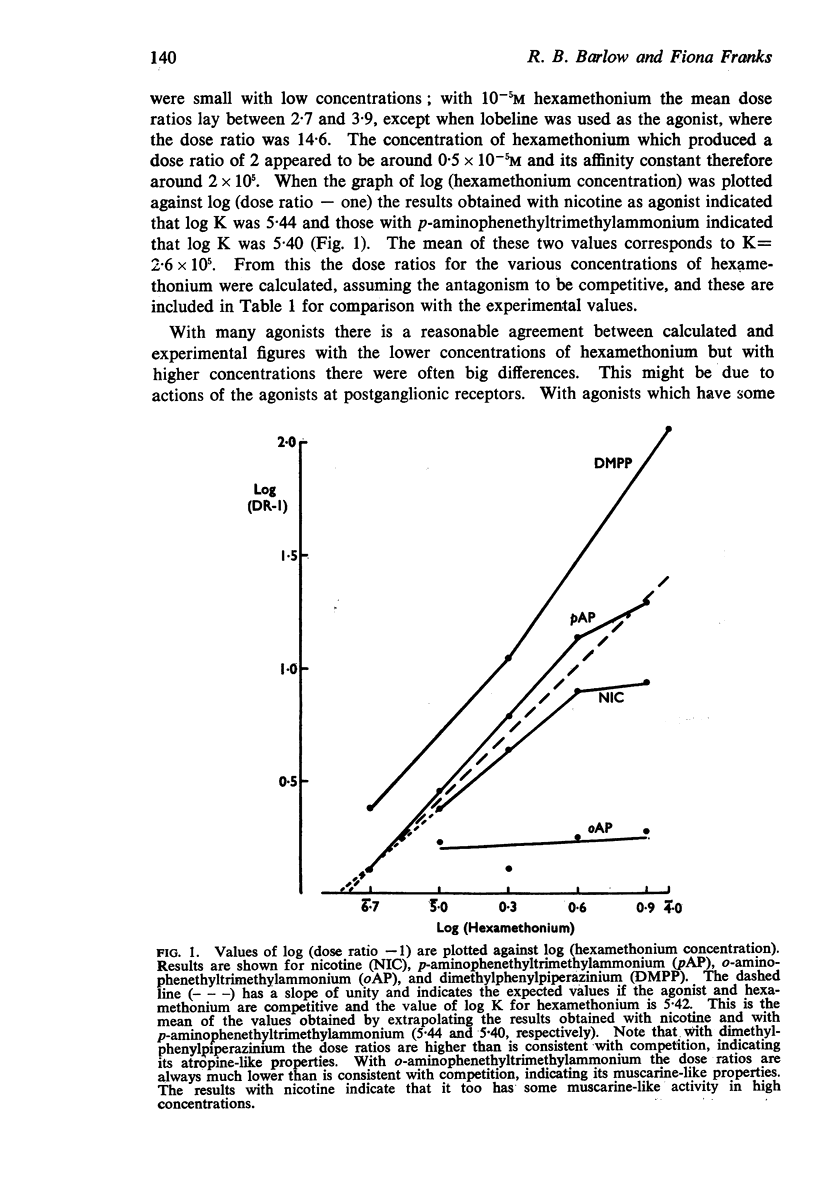
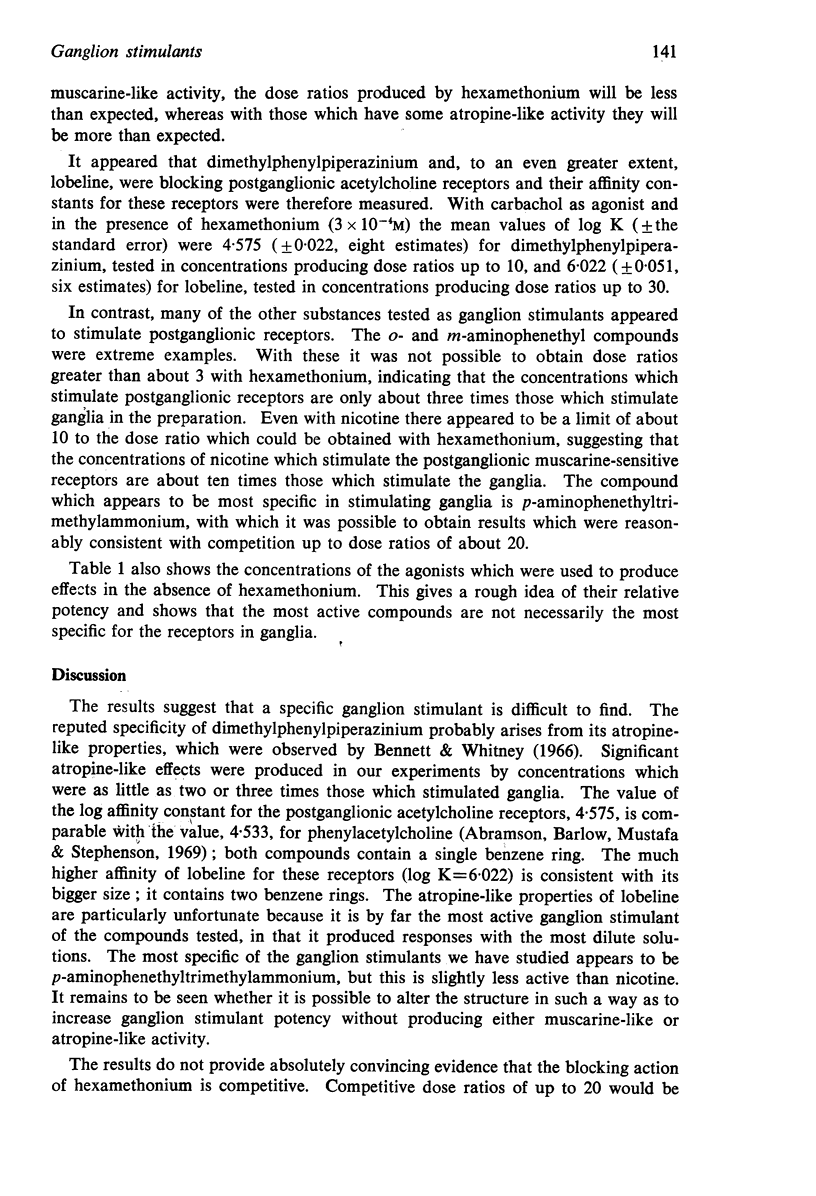
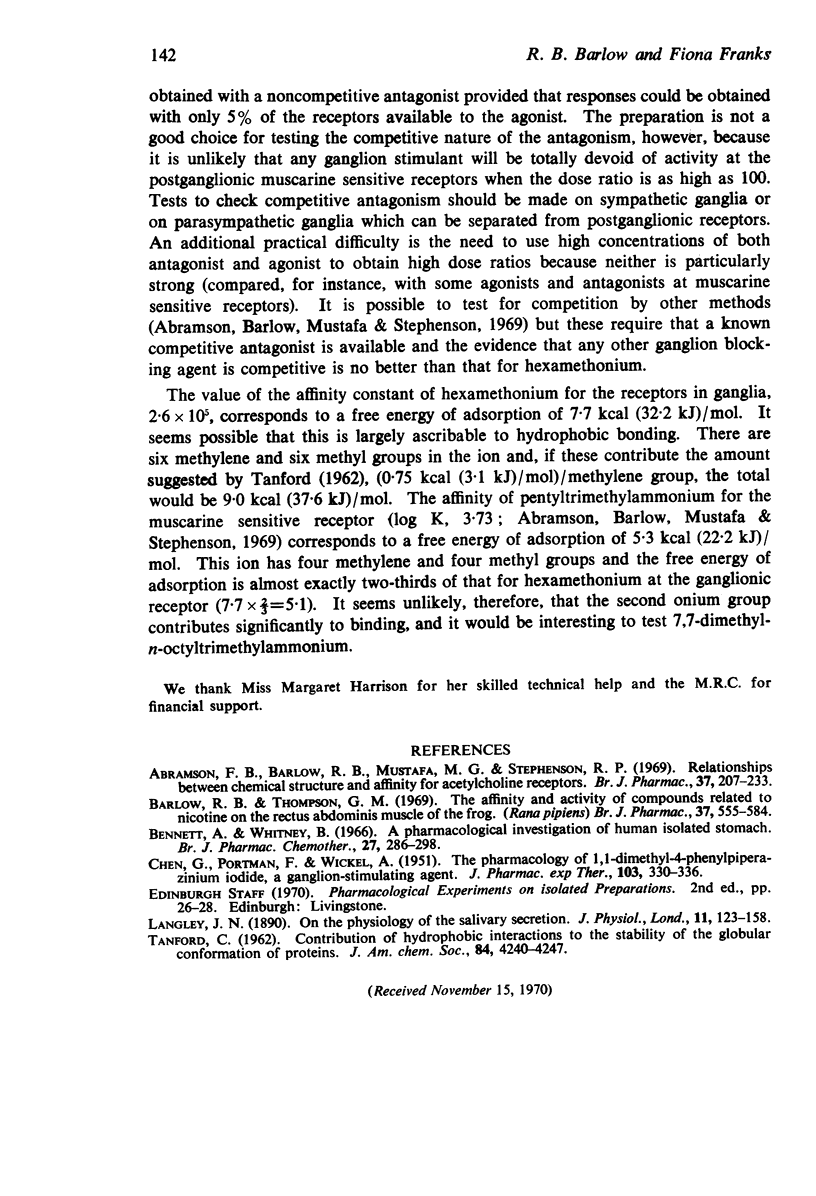
Selected References
These references are in PubMed. This may not be the complete list of references from this article.
- Abramson F. B., Barlow R. B., Mustafa M. G., Stephenson R. P. Relationships between chemical structure and affinity for acetylcholine receptors. Br J Pharmacol. 1969 Sep;37(1):207–233. doi: 10.1111/j.1476-5381.1969.tb09539.x. [DOI] [PMC free article] [PubMed] [Google Scholar]
- Barlow R. B., Thompson G. M., Scott N. C. The affinity and activity of compounds related to nicotine on the rectus abdominis muscle of the frog (Rana pipiens). Br J Pharmacol. 1969 Nov;37(3):555–584. doi: 10.1111/j.1476-5381.1969.tb08496.x. [DOI] [PMC free article] [PubMed] [Google Scholar]
- Bennett A., Whitney B. A pharmacological investigation of human isolated stomach. Br J Pharmacol Chemother. 1966 Aug;27(2):286–298. doi: 10.1111/j.1476-5381.1966.tb01663.x. [DOI] [PMC free article] [PubMed] [Google Scholar]
- CHEN G., PORTMAN R., WICKEL A. Pharmacology of 1,1-dimethyl-4-phenylpiperazinium iodide, a ganglion stimulating agent. J Pharmacol Exp Ther. 1951 Nov;103(3):330–336. [PubMed] [Google Scholar]
- Langley J. N. On the Physiology of the Salivary Secretion: Part VI. Chiefly upon the connections of peripheral nerve cells with the nerve fibres which run to the sub-lingual and sub-maxillary glands. J Physiol. 1890 Jan;11(1-2):123–158.1. doi: 10.1113/jphysiol.1890.sp000325. [DOI] [PMC free article] [PubMed] [Google Scholar]


